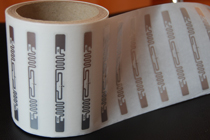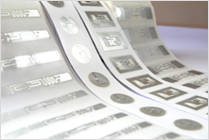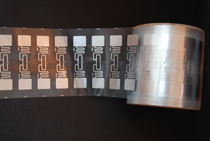RFID Inlay
RFID inlay
Radio-frequency identification, or RFID, technology provides identifying information about a person or an object, much like Barcodes technology does. The RFID inlay -- which can be as small as a grain of rice -- is the functional part of an RFID tag's label that encodes the identifying information. The RFID inlay uses radio frequency waves to relay information to a computer system via an RFID reader.
The RFID inlay consists of two components. An integrated circuit or microchip that stores personal identifying information attaches to a small coil of aluminum, copper or silver wires called the antenna, which transmits and receives radio frequency signals. The microchip and antenna are then placed on a label, and the entire unit is encased in plastic.
| RFID dry inlay / RFID wet inlay Description: Operating Frequency: HF 13.56MHz, UHF GLOBAL 860MHz-960MHz Standard ISO14443, ISO15693 ,ISO 18000 Material: PVC, PET Dimension HF:300*25mm,86*54mm,80*50mm,50*50mm, dia.50mm,45*45mm, dia.45mm,40*25mm,,35*35mm ,dia.35mm,dia.30mm,25*25mm,dia.25mm,etc UHF:300*25mm,120*38mm,100*100mm,100*15mm, 86*54mm,80*50mm,etc Thickness: 0.10 - 0.15mm , Antenna: HF: AL Etching, Ultrasonic Embedding; UHF: AL Etching Bonding: HF: FLIP chip,MOA2, UHF: Flip chip Working temperature: -25℃ ~ +55℃ Store temperature: -25℃ ~ +65℃ |
|
Rfid inlay Types
RFID inlays are classified as "wet" or "dry." RFID inlays are considered "wet" if an adhesive is applied to the inlay to adhere it to a pressure-sensitive liner that comprises the label. Inlays are considered "dry" when the inlay is attached to the label without the use of an adhesive.





